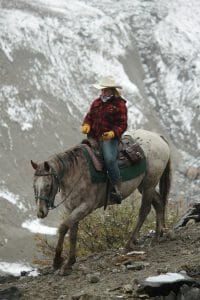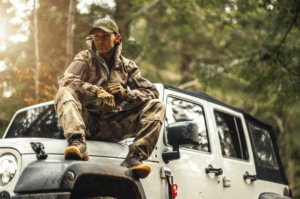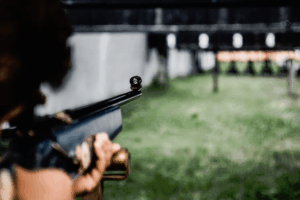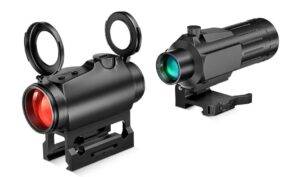
 A hunting expedition can be an exhilarating day and experience for you. However, it can easily turn into a daunting endeavor, especially if you do not have what it takes to follow hounds. Herein we will explore the top tips to follow to ensure you have a successful expedition and a day to remember.
A hunting expedition can be an exhilarating day and experience for you. However, it can easily turn into a daunting endeavor, especially if you do not have what it takes to follow hounds. Herein we will explore the top tips to follow to ensure you have a successful expedition and a day to remember.
Preparing
The first thing you want to do is to research the local packs that you can join. If you have a friend knowledgeable in matters of hunting, ask him for recommendations. Alternatively, you can visit www.mfha.org.uk, The Masters of Foxhounds Associations website.
When you find your local hunt, contact their secretary, letting them know that it will be your first hunt. Also find out the various days that the pack hunts, seeking suggestions on the best day for you, a novice hunter, to join the pack.
If you have a friend conversant with hunting in your local area, you should try to persuade them to join you on your first hunt. In unsuccessful or you do not have friends used to hunting, you should ask the hunt secretary to assign you, someone, to guide you through the hunt, especially the first few hours.
Getting Fit
Another preparation element to keep in mind is fitness. You want you and your horse to be in the best shape possible leading up to the hunt. If your horse can only handle some light work, you should take some time to build up his fitness. Take your horse on long hacks, tackling cantering and hill work. A sign of fit horse is when he or she can canter trot for three hours without tiring. However, if your horse can handle medium work – a one-day-event of low-level work, he or she should be fine.
As for you, the fitter you are the better. Increased fitness means you will have faster reactions and you will be a better rider.
Dressing Up
While the hunting pack will never turn you away from a hunt for not wearing the right attire, it is important that you are tidy, clean, and, importantly, comfortable. That being said, it is nice to fit in with the rest of the pack. As such, if you can, do wear pale-colored jodhpurs or breeches, brown or black riding boots, a tweed/navy/black jacket, a white stock (and if you wear a tweed jacket wear a colored one), gloves, and a hat that has a dark cover.
As for your hair, if it is short, you can leave it as is. Otherwise, tie it up before wearing a hair net.
Getting Tacked Up
Tack should obviously be safe and clean. Ensure the stitching on your stirrup and bridle leathers are in perfect condition before meeting the hunting pack. You saddle cloth/numnah should be discrete. As such, as long as it is brown or black, no one will wind you up.
It is important to note that horse does find the prospect of going hunting very exciting. Therefore, it is a good idea to use a stronger bit. However, use it at home for a while before heading to the hunt. Another accessory you should have is a neck strap. It will help you hold on during the hunt. With regards to plaiting, it is up to you whether to use one. However, some hunts are particular about gear. As such, it is a good idea to ask the secretary first.
It is recommended that you use a clip that takes off between the hind legs and the belly. Put a red ribbon is you suspect that your horse might kick out.
Getting Ready
On the day of the hunt, it is important to be time conscious. Therefore, ask the secretary where to park, leaving ample time to move from the lorry to the meet. Ensure that you travel with your horse tacked up and ready. In doing this, you will avoid the daunting task of trying to tack up an exciting horse. Depending on the recommended parking spot, you should try and park about 20 minutes away from the horse to provide plenty of time for the horse to settle.
Upon arriving at the meet, find the hunt secretary and introduce yourself. While at it, pay your ‘cap’ money (which you should have inquired about whilst contacting the secretary). Typically, the secretary should point you in the direction of the field master. Try and stand your horse a small distance away from the crowd, allowing him to settle in. If he or she is fidgety and nervous, walk him around in big circles.
Getting Off
The huntsman and the hounds will initiate movement, moving to the direction of where the first trail has been laid. Ideally, you should target to be on the outside of the middle pack. Waiting to be the last to move out will increase your horse nervousness. However, being among the middle pack will give our horse the sense of being part of the group while at the same leaving ample room for him.
While setting out, test braking always keeping the horse under your control right from the start. Take things easy. Talk to the people around you. Why not turn to the person next to you and just say “nice horse”. Interacting with people will make the whole experience that much more fun and you will make new friends along the way. However, whilst interacting and taking in the beautiful countryside, make sure you pay attention to what is happening around.
On the first trip, you can expect your horse to be well behaved. However, after a few outing, the horse will know what is happening, making him very excited. As such, stick to it until the process of hunting becomes routine.
Getting Home
An important part of hunting is keeping tabs on your horse and taking note of when he or she is tired. This is especially important when you have a young horse. You should take a young horse home at least thirty minutes before they are exhausted. Waiting for the horse to get completely exhausted means you run the risk of the horse tripping over the fence or stumbling.
When leaving, say “Good Night” to the secretary and field master before leaving. It does not matter the time of day you are leaving saying “Goodnight” is the right term to use.
Thereafter, hack back to your lorry or yard. Walk the last mile to allows your horse to cool off, thereby making sure that they are not sweaty. When you reach the yard, you should take proper care of your horse. Wash him with warm water or at the very least brush the mud off and thoroughly wash the tail.
Inspect the horse thoroughly ensuring that he does not have bumps and scrapes. If there are, treat them as necessary. Finally, feed and water the horse. Ensure that he has plenty of water and feed. Two hours later, check on him and top up the water buckets. Very often, after a hunt horse will break out in sweat for a couple of hours. If you notice your horse sweating, towel him with horse rugs and change regularly to ensure he is comfortable.
The next day, trot him and ensure that he is sound. Thereafter, you should turn your horse in the field as this prevent him from getting stiff.








